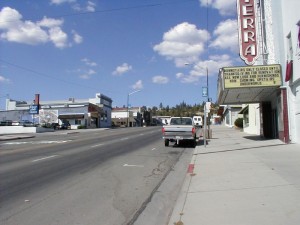
Editor's Note: The barriers to getting health care can be bad enough in urban areas, where poverty, lack of insurance and cultural divides are serious barriers to care. But if you live in rural parts of California there’s a serious barrier of a different kind: distance. As part of our first-person series "What's Your Story?" we hear from Kelly Frost of Redding about how the care you need may be hours away from your home.
Being on dialysis is tough enough without having to travel two or three hours each way just to get to the clinic. But when you live in the far reaches of Northern California, that is exactly what you must do. I sometimes sit with my wife when she does her dialysis treatment. We are lucky because we live only about 10 minutes away from the clinic in Redding. But every morning, the “remotes,” people who live on farms or in rural towns, climb into the mini-vans and come from Trinity County to the west; Mount Shasta, Weed, and Alturas to the North; and some from as far away as Susanville, near Reno.
They get up in the middle of the night, travel several hours, sometimes in bad weather, sit for treatment for three hours, and go home. Then in two days they do it all over again. When the weather turns, or there is an accident which closes the interstate, the problem compounds. Sometimes, they can’t get to Redding, or worse yet, they get here and can’t get home. Packing a lunch and three days of meds is standard fare for most. You’ve got to think ahead. Have a plan, a place to stay until the roads open. The dialysis center has some funds to help with a motel or a meal, but not much. Not for everyone, and not for more than a day.
Some are lucky to have family nearby, but not the others. They have to fend for themselves, and some are in wheelchairs or otherwise can’t get around. Better have some money for a room. And with most of them on Medi-Cal that’s not easy.
The social worker tells me that missing a treatment or two can also be extremely dangerous. Fluid overload, shortness of breath, nausea. Even death if you miss too many. It’s a bad deal. Some consider moving to Redding to be closer to the clinic or stay near family. Others can’t afford to move. Others just like the rural lifestyle and feel they couldn’t make it in the big city.